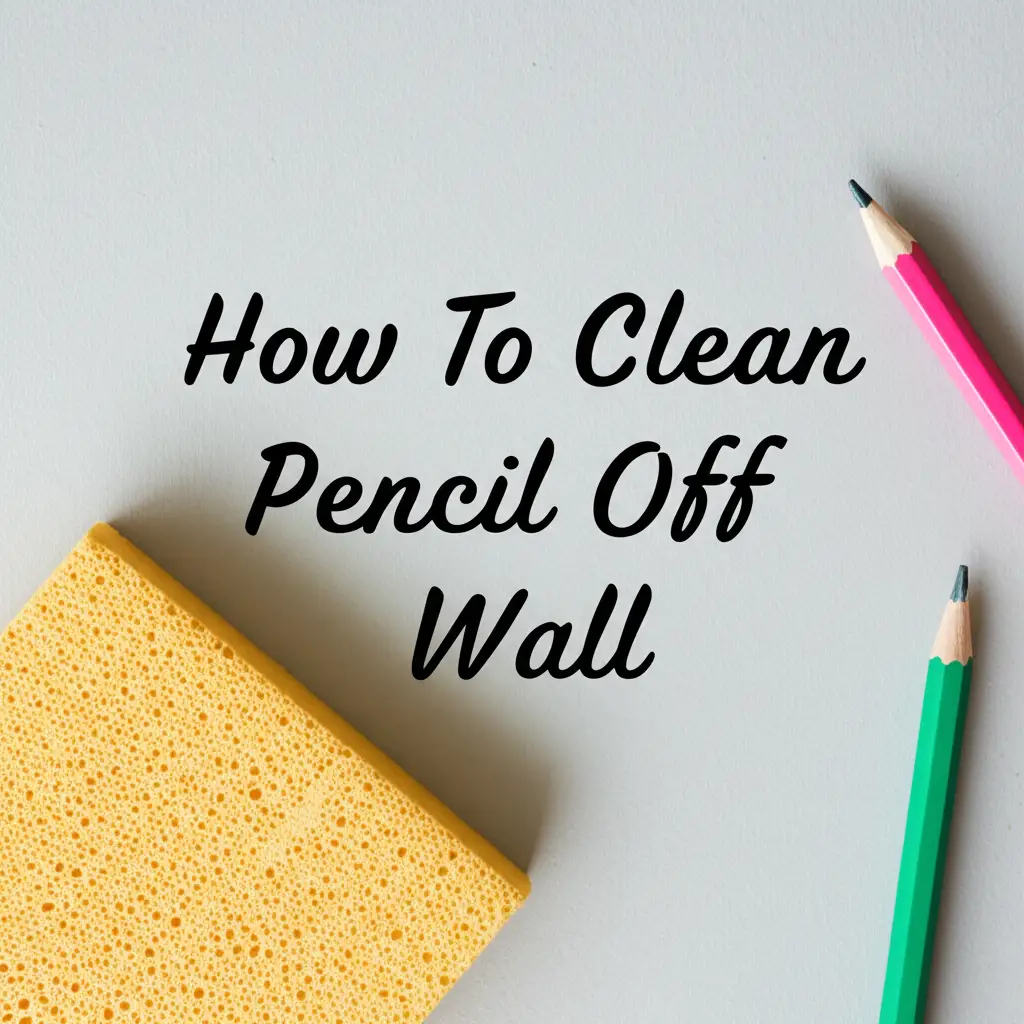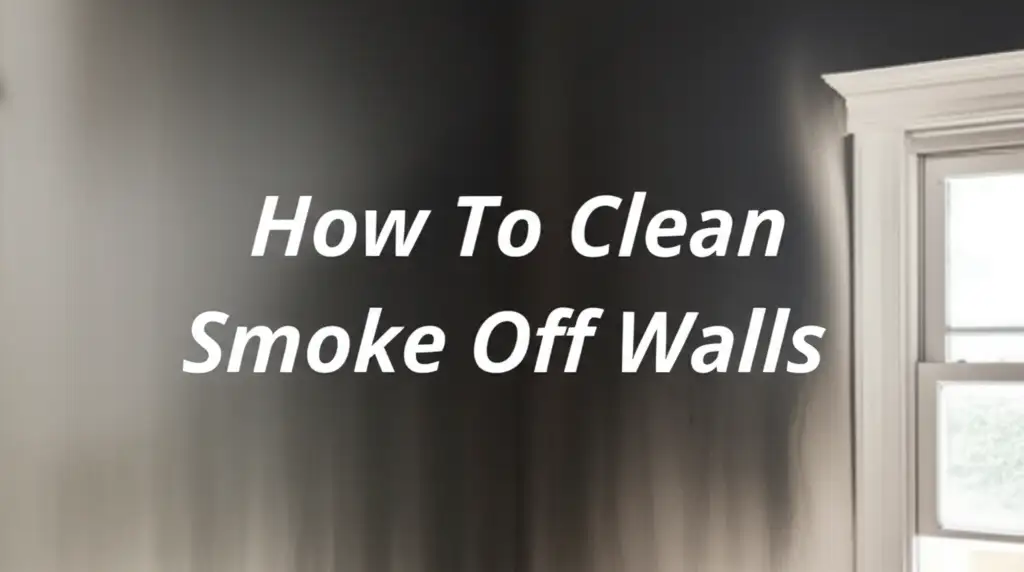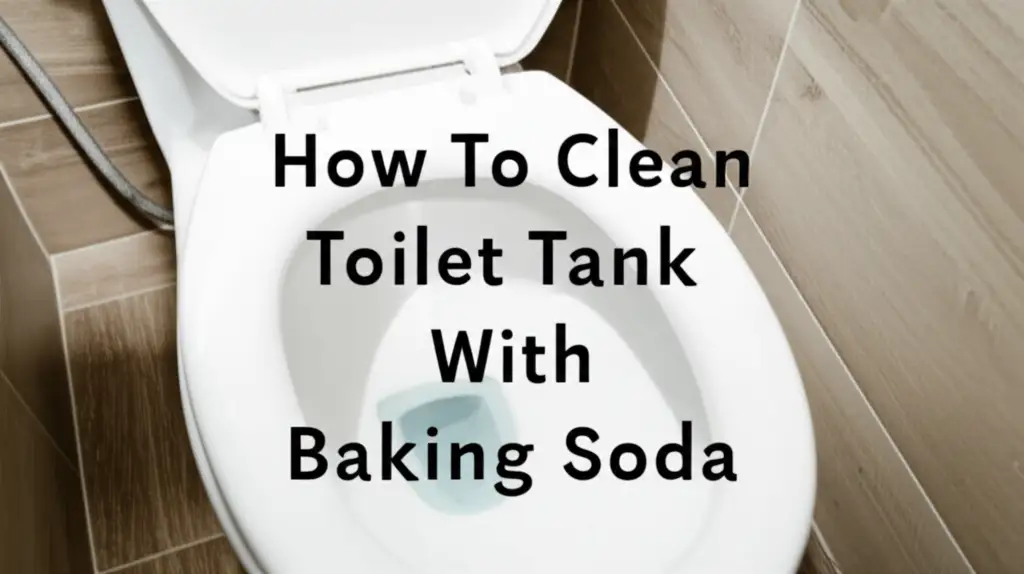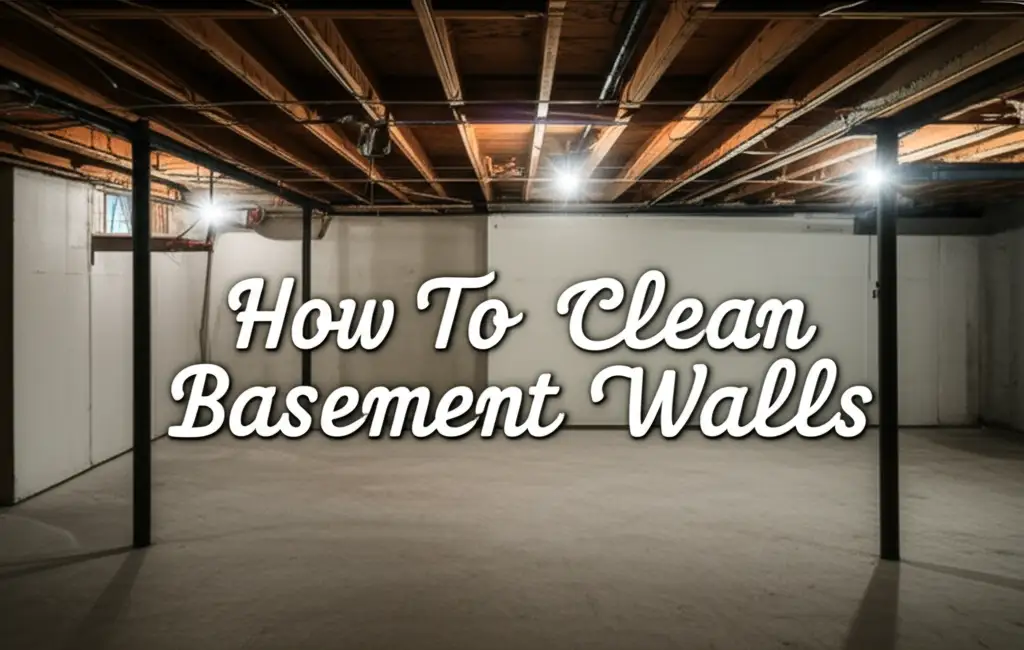· Surface Cleaning · 17 min read
How To Clean Yellow Walls From Smoke
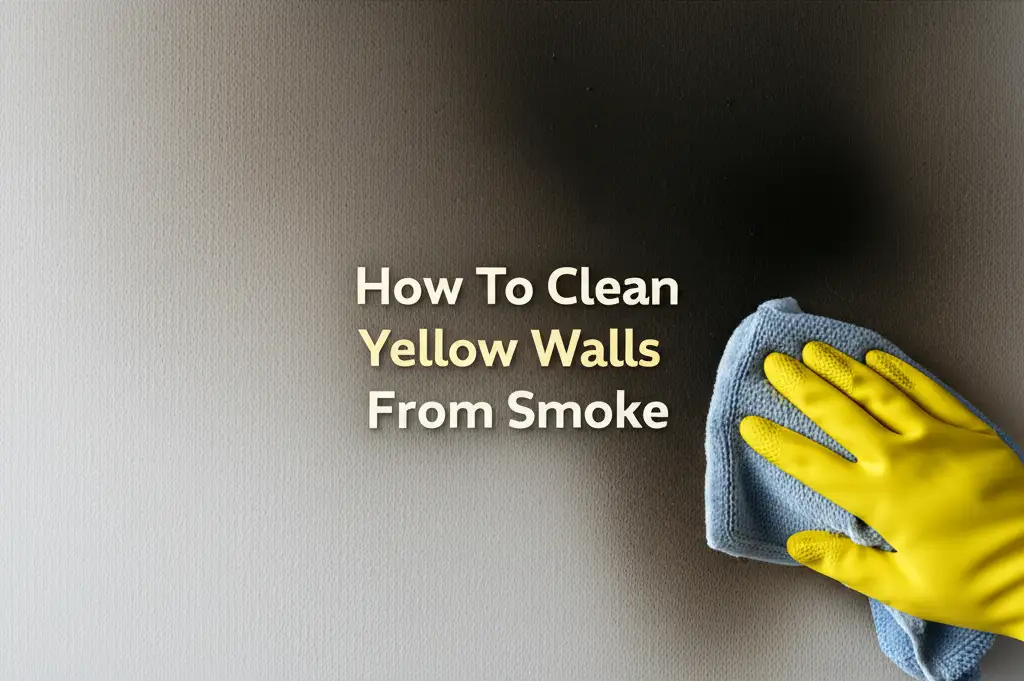
Restore Your Walls: How To Clean Yellow Walls From Smoke
Smoke inside a home creates a major problem. It leaves a sticky, yellow residue on walls. This residue smells bad and looks unpleasant. You need to know how to clean yellow walls from smoke. This guide helps you tackle the challenge. We cover everything from gentle cleaning solutions to heavy-duty methods.
Takeaway
- Prepare your room and walls properly before cleaning.
- Use gentle cleaners like vinegar or baking soda for light stains.
- Employ stronger solutions like TSP substitute for heavy smoke residue.
- Focus on removing smoke odors completely, not just cleaning surfaces.
- Prevent future yellowing by improving ventilation and avoiding indoor smoking.
To clean yellow walls from smoke, first dust the walls. Then, apply a suitable cleaning solution, starting with mild options like vinegar or baking soda. Work in small sections, wiping thoroughly, and rinse the wall afterward. For stubborn stains, you can use stronger commercial cleaners.
Understanding Smoke Damage on Walls
Smoke causes significant damage to interior surfaces. It leaves a sticky film of tar and nicotine. This film makes walls turn yellow or brown over time. Different smoke types, like cigarette smoke or fireplace smoke, leave different residues. However, all types require careful cleaning to remove.
Smoke particles are tiny. They travel through the air and settle on every surface. Walls are a large flat area, so they collect a lot of these particles. The tar and nicotine in smoke cling to paint and wallpaper. This creates a visible stain and a lingering odor. You must remove this layer to truly clean your walls.
The yellowing is not just dirt. It is a chemical change on the surface. Nicotine and tar are oily substances. They stick firmly to paint. Simple dusting will not remove them. You need specific cleaning agents to break down these compounds. This process restores the wall’s original color.
Smoke also affects indoor air quality. It leaves behind harmful particles. Cleaning your walls improves air quality. It also removes the source of the bad smell. Understanding what causes the yellowing helps you choose the right cleaning method.
Essential Tools and Safety Precautions
Before you begin cleaning, gather your tools. Having everything ready saves time. You also need proper safety gear. This protects you from cleaning chemicals and smoke residue. Your safety is always important.
Here is what you need:
- Buckets: Have two – one for cleaning solution, one for rinse water.
- Sponges or Soft Cloths: Microfiber cloths work well for cleaning walls.
- Drop Cloths or Old Sheets: Protect your floors and furniture.
- Gloves: Rubber or latex gloves protect your hands from chemicals.
- Safety Glasses: Eye protection prevents splashes from reaching your eyes.
- Face Mask: An N95 mask protects your lungs from dust and odors.
- Stepladder: Reach high spots safely.
- Ventilation: Open windows and doors. Use fans to circulate air.
- Old Clothes: Wear clothes you do not mind getting dirty or stained.
Always work in a well-ventilated area. Open windows and use fans. This helps clear out fumes. It also helps the walls dry faster. Read all labels on cleaning products. Follow their safety instructions. Never mix different cleaning agents unless the product label permits it. This can create dangerous fumes.
Dispose of cleaning water properly. It will be very dirty. Do not pour it down drains that connect to sensitive septic systems. Instead, dispose of it according to local guidelines. Protecting yourself and your home is the first step in cleaning yellow walls from smoke.
Preparation Is Key: Setting Up for Success
Proper preparation makes the cleaning job easier and more effective. Skipping this step can lead to a bigger mess. It can also damage your furniture or floors. Taking time to prepare saves you time in the long run.
First, clear the room. Move all furniture away from the walls. If you cannot move large items, cover them completely. Use drop cloths or old sheets to protect your floors. Smoke residue can drip onto floors during cleaning. Protecting them prevents new stains.
Next, dust the walls. Use a dry cloth or a vacuum cleaner with a brush attachment. Remove loose dust and cobwebs. This step is important. If you do not remove loose dirt, it will turn into muddy streaks when wet. Dust from smoke-damaged walls often smells bad. Use your face mask during this step.
Finally, always test your cleaning solution. Find an inconspicuous spot on the wall. This could be behind a door or inside a closet. Apply a small amount of your chosen cleaner. Let it sit for a few minutes. Then, wipe it off. Check for any discoloration or damage to the paint. Different paints react differently to cleaners. This test prevents unwanted surprises. Once the test area looks good, you can proceed with confidence.
Gentle Methods: Cleaning Light Smoke Stains
For lighter smoke stains, you can often use gentle, homemade solutions. These methods are less harsh on your walls. They are also safer for your home environment. Start with these options before moving to stronger chemicals. Many people find success with common household items.
Vinegar Solution
Vinegar is a natural acid. It cuts through grease and grime. It also neutralizes odors. This makes it excellent for light smoke residue.
- Mix the Solution: Combine equal parts white vinegar and warm water in a bucket. For example, use one cup of vinegar and one cup of water.
- Apply to Walls: Dip a clean sponge into the solution. Wring out excess liquid. You want the sponge damp, not dripping wet. Starting from the bottom, gently wipe a small section of the wall. Working from the bottom prevents streaks from running down.
- Rinse: Use a second bucket of clean, warm water and a separate clean cloth. Wipe the cleaned section to remove vinegar residue. This step is crucial to prevent streaks.
- Dry: Pat the wall dry with a clean, dry towel. Allow the wall to air dry completely.
Vinegar can have a strong smell. The smell dissipates quickly as it dries. This method is effective for removing light yellowing and some odor. You can learn more about general cleaning with vinegar and baking soda on our site: how to clean with vinegar and baking soda.
Baking Soda Paste
Baking soda is a mild abrasive and a natural deodorizer. It works well for slightly tougher spots.
- Make a Paste: Mix a few tablespoons of baking soda with a little warm water. Add water slowly until you get a thick paste. It should be like toothpaste.
- Apply to Stains: Apply the paste directly onto stubborn yellow spots. Let it sit for 5-10 minutes. The baking soda helps lift the stains.
- Gently Scrub: Use a soft cloth or sponge to gently scrub the paste into the stain. Do not scrub too hard, as this can damage the paint.
- Wipe Clean: Use a damp, clean cloth to wipe off the paste. Rinse the cloth often.
- Dry: Dry the area with a clean towel.
Baking soda is safe for most painted surfaces. It helps absorb odors as it cleans.
Mild Dish Soap and Warm Water
For very light smoke film, a simple solution of dish soap and warm water can work.
- Mix the Solution: Add a few drops of mild dish soap to a bucket of warm water. Mix it until suds form.
- Wipe Walls: Use a clean sponge or cloth dipped in the soapy water. Wring it out well. Wipe the walls in small sections.
- Rinse and Dry: Rinse with clean water and dry with a separate towel.
Always remember to work from bottom to top when cleaning and top to bottom when rinsing. This method helps avoid streaks. These gentle methods are a good starting point for most smoke-damaged walls.
Tougher Stains: Tackling Heavy Nicotine and Smoke Buildup
Sometimes, gentle methods are not enough. Heavy smoke damage, often from long-term smoking, leaves thick tar and nicotine layers. For these stubborn stains, you need stronger cleaning agents. These products cut through the greasy residue effectively. Always use caution and proper ventilation when working with stronger chemicals.
TSP Substitute
Trisodium Phosphate (TSP) is a powerful cleaner. It breaks down heavy grease and smoke residue. Modern “TSP substitutes” are usually safer and widely available. They offer similar cleaning power.
- Prepare the Area: Ensure the room is very well-ventilated. Open all windows and use fans. Wear gloves, eye protection, and a mask. Cover floors and furniture completely with drop cloths.
- Mix the Solution: Follow the product instructions for dilution. Typically, you mix a small amount of TSP substitute with warm water in a bucket. Read the label carefully.
- Apply Carefully: Dip a sponge into the solution. Wring it out well. Apply the solution to a small section of the wall. Work from the bottom up to prevent streaks. Do not let the solution dry on the wall.
- Scrub and Rinse: Gently scrub the wall with the sponge. You will see the yellow residue come off. Immediately wipe the area with a clean cloth dipped in plain, clean water. Rinse the cloth often.
- Dry: Use a dry towel to pat the area dry. Repeat for other sections. Change your rinse water often. It will become very dirty with nicotine and tar.
TSP substitute is very effective. It is also strong. Be careful not to let it sit on the wall too long. It can strip paint if left on for extended periods. This method removes tough nicotine stains. It prepares the wall for painting if needed. When cleaning painted surfaces, especially with strong cleaners, it’s vital to know how to clean painted walls without leaving streaks. This prevents new cosmetic issues.
Commercial Smoke Cleaners
Many companies make specific cleaners for smoke damage. These products are designed to break down tar and nicotine. They often contain degreasers and deodorizers.
- Research Products: Look for cleaners labeled “smoke damage cleaner” or “nicotine remover.” Read reviews to find effective options.
- Read Instructions: Every commercial cleaner has specific instructions. Follow them precisely. This includes dilution ratios, application methods, and safety precautions.
- Test First: Always test the cleaner in an inconspicuous spot. Some powerful cleaners can affect paint finish.
- Apply and Wipe: Apply the cleaner as directed. This might involve spraying, wiping with a cloth, or using a sponge. Work in small areas.
- Rinse Thoroughly: Most commercial cleaners require rinsing with clean water. This removes residues that can attract new dirt.
- Dry: Dry the wall thoroughly.
These cleaners can be powerful. They are a good choice when homemade methods fail. Always prioritize ventilation and personal protection when using them. Remember that smoke often affects ceilings too. The techniques for tough stains on walls are similar to those for how to clean a ceiling. This means you might need to apply these methods overhead as well.
Odor Removal: Beyond Just Cleaning the Surface
Cleaning the yellow stains from your walls is a big step. However, smoke odor often lingers. The smell gets into porous surfaces. It settles in paint, drywall, and even wood. To truly eliminate the smell, you must address these hidden odor sources. A clean look is only half the battle. A fresh smell completes the job.
Air Out the Space
Ventilation is your first line of defense against smoke odor.
- Open Windows and Doors: Keep them open for several days, if possible. Fresh air helps dissipate trapped odors.
- Use Fans: Place fans to blow air out of the room. This creates air circulation. It pushes stale, smoke-filled air outside.
- Run HVAC System: If you have an HVAC system, run it with the fan on. Change your air filters. Smoke particles can clog filters. They also carry odors. Consider using high-quality HEPA filters.
This ongoing airflow helps refresh the entire space. It is a simple but vital step.
Absorb Lingering Odors
Even after cleaning, some odors may remain. Odor absorbers help.
- Activated Charcoal: Place bowls of activated charcoal around the room. Charcoal is highly porous. It absorbs odors from the air. Replace it every few days.
- Baking Soda Bowls: Similar to charcoal, bowls of baking soda can absorb odors. Sprinkle it on carpets and furniture, let it sit, then vacuum.
- White Vinegar Bowls: Place small bowls of white vinegar in the room. Vinegar absorbs odors. The vinegar smell disappears as it dries.
- Coffee Grounds: Fresh coffee grounds can also absorb odors. Place small bowls around the room.
These methods work slowly. They pull odor molecules from the air. They are good for light residual smells.
Clean Soft Surfaces
Smoke odors cling to fabric. You need to clean soft surfaces too.
- Curtains and Blinds: Wash fabric curtains according to their care label. Wipe down blinds.
- Carpets and Rugs: Professional carpet cleaning is often best for heavy smoke odors. For lighter smells, sprinkle baking soda, let it sit for hours, then vacuum thoroughly.
- Upholstery: Sprinkle baking soda on furniture upholstery. Let it sit, then vacuum. For deeper cleaning, use a fabric cleaner designed for upholstery. Always spot test first.
- Hard Surfaces: Do not forget to wipe down all hard surfaces. This includes doors, trim, light fixtures, and windows. Smoke residue settles everywhere.
Professional Ozone Treatment (Use with Caution)
For very severe, deep-set smoke odors, professional ozone treatment is an option.
- How it Works: An ozone generator produces O3 (ozone). Ozone is a powerful oxidizer. It neutralizes odor molecules in the air and on surfaces.
- Professional Use Only: Ozone generators are dangerous if used improperly. High concentrations are harmful to humans, pets, and plants. Always hire a professional company for this service. They know how to use the equipment safely.
- Leave the Space: You must vacate the treated area completely during and after treatment. Professionals air out the space thoroughly before you return.
Ozone treatment is a last resort. It is effective but requires expert handling. Most typical smoke odors do not need this extreme measure. Thorough cleaning and ventilation often solve the problem.
Preventing Yellowing: Stopping Smoke Damage Before It Starts
Cleaning yellow walls from smoke takes a lot of work. The best approach is to prevent the yellowing from happening at all. This protects your home’s appearance. It also keeps your indoor air quality high. Small habits can make a big difference over time.
No Indoor Smoking
This is the most direct way to prevent smoke damage. Do not smoke inside your home. This includes cigarettes, cigars, pipes, and even vaping. While vaping may seem less harmful, it still produces residue that can settle on surfaces. Smoke contains tar and nicotine that cling to walls. Moving smoking outside eliminates the source of the problem completely.
If guests smoke, politely ask them to step outside. Provide an outdoor area for them. This protects your home from yellowing walls and lingering odors. It is the single most effective prevention strategy.
Improve Ventilation
Good air circulation helps remove airborne particles. It stops them from settling on your walls.
- Open Windows Regularly: Even for short periods, opening windows airs out your home. Do this daily, especially in areas where cooking or other activities create airborne particles.
- Use Exhaust Fans: Install and use exhaust fans in kitchens and bathrooms. These remove moisture, odors, and airborne grease. They also help pull out other airborne particles that might cause discoloration.
- Ceiling Fans: Run ceiling fans to circulate air within rooms. This helps distribute clean air and prevent stagnant air where particles can settle.
- Air Purifiers: Consider using portable or whole-house air purifiers. High-efficiency particulate air (HEPA) filters capture microscopic particles, including smoke. This reduces the amount of residue that lands on your walls.
Good ventilation prevents particle buildup. It also makes your home feel fresher.
Regular Light Cleaning
Even without smoking indoors, walls can get dirty. Dust and everyday grime can accumulate. A light, regular cleaning routine helps.
- Dust Walls: Use a dry microfiber cloth or a vacuum attachment to dust your walls once a month. This removes loose dirt before it sticks.
- Spot Clean: Address any small marks or spills as soon as they happen. Use a mild soap and water solution.
- Wash Walls Annually: Consider a light wash of your walls once a year. Use a mild cleaner like dish soap and warm water. This prevents a thick layer of grime from building up. Consistent cleaning keeps your walls looking fresh. It stops yellowing from general dirt accumulation, even if it’s not smoke-related. This method is important to maintain clean walls. It avoids the need for heavy-duty cleaning later.
Preventing smoke damage saves you time and effort. It also keeps your home looking its best. These proactive steps ensure your walls stay clean and bright.
When to Call a Professional
Sometimes, the smoke damage is too severe for DIY methods. You might face extensive yellowing, deep-set odors, or structural damage. In these cases, it is time to call a professional smoke damage restoration company. They have specialized equipment and expertise.
Extensive Damage
- Widespread Yellowing: If every wall, ceiling, and even fixtures are heavily yellowed, the task is overwhelming for one person. Professionals can clean large areas efficiently.
- Deep-Set Odors: If cleaning the walls and airing out the house does not remove the smell, the odor has penetrated deeper. Smoke can permeate insulation, carpets, subflooring, and even the HVAC system. Professionals can use advanced techniques like ozone treatments or thermal fogging to eliminate these deep odors.
- Structural Damage: In severe cases, especially after a fire, smoke can weaken structural components. It can also cause corrosion. Professionals assess and repair this type of damage.
Health Concerns
- Respiratory Issues: Lingering smoke particles and odors can cause or worsen respiratory problems. If you or family members experience health issues, a professional cleaning is important for your health.
- Toxic Residues: Smoke from different materials can leave behind toxic residues. Professionals know how to handle and safely remove these substances. They protect your health during the cleaning process.
Time and Effort
- Lack of Time: Cleaning heavy smoke damage takes many hours or even days. If you do not have the time, a professional service is a good investment.
- Physical Limitations: The job is physically demanding. It involves scrubbing, reaching high places, and moving furniture. If you have physical limitations, hiring experts makes sense.
Professional cleaning services have industrial-strength cleaners and equipment. They have trained staff. They can restore your home to a pre-damage condition. They save you effort and ensure a thorough cleaning. Do not hesitate to seek expert help when the job is too big.
FAQ Section
Can smoke damage walls permanently?
Smoke can cause permanent staining if left uncleaned for many years, especially with heavy exposure. The tar and nicotine can deeply penetrate paint layers. However, in most cases, thorough cleaning can remove the yellowing. Sometimes, very old or extensive stains might require repainting after cleaning.
How do I get rid of cigarette smell in my house?
To remove cigarette smell, you must clean all affected surfaces. This includes walls, ceilings, carpets, furniture, and curtains. Use effective cleaning solutions on hard surfaces. Wash fabrics. Improve ventilation by opening windows and using fans. Place odor absorbers like activated charcoal or baking soda.
Will repainting cover smoke stains?
Repainting directly over smoke stains is not advised. The tar and nicotine can bleed through new paint, causing the yellowing to reappear over time. You must clean the walls thoroughly first. After cleaning, apply a stain-blocking primer before painting. This creates a barrier.
Is TSP safe for painted walls?
Trisodium Phosphate (TSP) is safe for most painted walls when used correctly. However, it is a very strong cleaner. Always dilute it according to package directions. Test it in an inconspicuous spot first. Do not let it sit on walls for too long. Rinse the walls thoroughly afterward to avoid damage or residue.
How long does it take to clean smoke off walls?
The time it takes depends on the severity of the smoke damage and the size of the area. Light smoke damage in a single room might take a few hours. Heavy, widespread nicotine staining throughout an entire house could take several days of intensive cleaning. Proper preparation also adds to the time.
Can smoke stains affect health?
Yes, smoke stains are not just cosmetic. The residue contains harmful chemicals like tar and nicotine. These chemicals can off-gas into the air. Exposure to these residues can contribute to respiratory irritation, allergies, and other health issues, especially for children, pets, or those with existing conditions. Cleaning reduces this health risk.
Conclusion
Cleaning yellow walls from smoke seems like a big task. You can achieve excellent results with the right approach. Start with good preparation. Choose the right cleaning method for your walls. Gentle solutions like vinegar or baking soda work for light stains. Stronger cleaners like TSP substitute tackle heavy nicotine buildup. Always prioritize safety and ventilation.
Remember, removing the odor is just as important as cleaning the visible stains. Airing out your home and cleaning soft furnishings completes the job. Preventing future yellowing through smart habits saves you effort later. If the damage is too much, professionals are always an option. You can restore your walls to their original, fresh look. Enjoy a cleaner, healthier home environment free from smoke residue and unpleasant smells.
- smoke damage
- wall cleaning
- yellow walls
- nicotine stains
- odor removal
- diy cleaning
- smoke residue

